
HMS Euryalus was a Royal Navy 36-gun Apollo-class frigate that saw service in the Battle of Trafalgar and the War of 1812. During her career she was commanded by three prominent naval personalities of the Napoleonic and post-Napoleonic period: Henry Blackwood, George Dundas and Charles Napier. After the end of the Napoleonic Wars she continued on active service for a number of years, before spending more than two decades as a prison hulk. She ended her career in Gibraltar where, in 1860, she was sold for breaking up.

HMS Apollo, the fifth ship of the Royal Navy to be named for the Greek god Apollo, was a fifth-rate frigate of the Lively class, carrying 38 guns, launched in 1805 and broken up in 1856.

HMS Zebra was a 16-gun Zebra-class sloop of the Royal Navy, launched on 31 August 1780 at Gravesend. She was the second ship to bear the name. After twenty years of service, including involvement in the West Indies campaigns during the French Revolutionary Wars, she was converted into a bomb vessel in 1798. In this capacity she took part in attacks on French ports, and was present at both battles of Copenhagen. The Navy sold her in 1812.
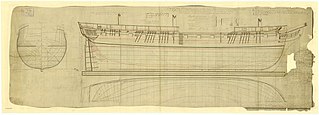
HMS Havannah was a Royal Navy 36-gun fifth-rate frigate. She was launched in 1811 and was one of twenty-seven Apollo-class frigates. She was cut down to a 24-gun sixth rate in 1845, converted to a training ship in 1860, and sold for breaking up in 1905.
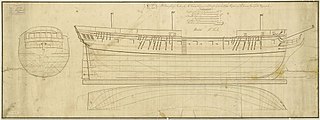
HMS Garland was a 22-gun Royal Navy Laurel-class post ship. She was built by Richard Chapman at Bideford and launched on 5 May 1807. She saw action in the War of 1812 and was sold in 1817.

HMS Hyacinth was an 18-gun ship-sloop of the Cormorant class in the Royal Navy, launched in 1806 at Great Yarmouth. In 1810 she was reclassed as a 20-gun Post-ship. She was again re-rated as 24 guns in 1817. Hyacinth took part in some notable actions on the coast of Spain, one of which earned qualified in 1817 for the Naval General Service Medal. She was broken up in 1820.
HDMS Brev Drageren was a Danish let brigger, launched in 1801 for the Royal Danish Navy. She was one of the many vessels the British captured from the Danish after the Battle of Copenhagen in 1807. She was subsequently added to the Royal Navy as HMS Brev Drageren, and was involved in two notable actions while in British service. She was sold in 1825.
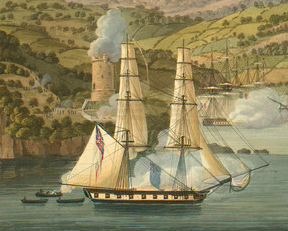
HMS Scout was a Cruizer-class brig-sloop built by Peter Atkinson & Co. at Hull and launched in 1804. She participated in a number of actions and captured several privateers in the Mediterranean during the Napoleonic Wars. The Navy sold her in 1827. In 1829 she reappeared as the British Southern Whale Fisheries whaler Diana. Diana made three voyages for Daniel Bennett & Son until condemned after an on-board explosion in April 1843 towards the end of her fourth voyage.
HMS Bream was a British Royal Navy Ballahoo-class schooner of four 12-pounder carronades and a crew of 20. The prime contractor for the vessel was Goodrich & Co., in Bermuda, and she was launched in 1807. Bream operated primarily in North American waters and had an uneventful career until the War of 1812. She then captured two small American privateers and assisted in the recovery of a third, much larger one. She also captured a number of small prizes before she was sold or broken up in 1816.

HMS Redwing was a Cruizer-class brig-sloop of the British Royal Navy. Commissioned in 1806, she saw active service in the Napoleonic Wars, mostly in the Mediterranean, and afterwards served off the West Coast of Africa, acting to suppress the slave trade. She was lost at sea in 1827.
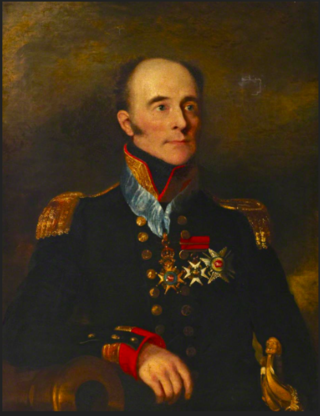
Rear-Admiral Sir Thomas Ussher KCH CB was an Anglo-Irish officer of the British Royal Navy who served with distinction during the French Revolutionary and Napoleonic Wars, and who in 1814 conveyed Napoleon Bonaparte into exile in Elba. He was nicknamed Undaunted Ussher.

HMS Success was a 32-gun Amazon-class fifth-rate frigate of the British Royal Navy launched in 1781, which served during the American Revolutionary, French Revolutionary and Napoleonic Wars. The French captured her in the Mediterranean on 13 February 1801, but she was recaptured by the British on 2 September. She continued to serve in the Mediterranean until 1811, and in North America until hulked in 1814, then serving as a prison ship and powder hulk, before being broken up in 1820.

Jeremiah Coghlan CB was a British naval officer. He was famous for his almost legendary feats of daring during the French Revolutionary and Napoleonic Wars. Despite his relatively humble background, he managed to rise from ship's boy to the rank of captain at the age of 34. This he achieved through notable acts of extraordinary courage and a succession of sea-fights which made him a celebrated hero, almost without equal, and he would later dine with both Nelson and Napoleon. Coghlan's career was initiated by his patron and close friend Sir Edward Pellew, after Pellew witnessed his heroic efforts during the rescue of the survivors of the East Indiaman Dutton.

HMS Swallow was a Cruizer-class brig-sloop launched in December 1805, nine months late. She served the Royal Navy through the Napoleonic Wars, capturing numerous privateers. After the end of the wars she was broken up in 1815.

HMS Espoir was a Cruizer-class brig-sloop of the Royal Navy, launched in 1804. She served during the Napoleonic Wars, primarily in the Mediterranean, and then briefly on the North American station. She was broken up in April 1821.

HMS Julia was a British Royal Navy 16-gun brig-sloop of the Seagull class launched in February 1806. After a fairly uneventful decade-long career she was wrecked at Tristan da Cunha in 1817 with heavy loss of life.
The hired armed brig Colpoys was a former French vessel, launched in 1803, that was acquired by a Plymouth owner in the same year. After some months as a privateer schooner in the West Indies, she was chartered to the Royal Navy as a hired armed vessel from April 1804 until 1807. Colpoys was apparently converted to a brig in early 1805. She participated in the blockade of Brest and captured numerous small vessels. Colpoys's contract ended in 1807, and her fate is unknown.
The French brig Nisus was a Palinure-class brig of the French Navy, launched in 1805. The Royal Navy captured Nisus at Guadeloupe in 1809. The British took her into service as HMS Guadaloupe, and sold her in November 1814.
HMS Cherokee was the lead ship of her class of 10-gun brig-sloops of the British Royal Navy. She saw service during the Napoleonic Wars. In 1810 she participated in an engagement that resulted in her crew qualifying for the Naval General Service Medal. The Navy sold Cherokee in 1828. She then became a merchantman trading between Liverpool and Africa. Cherokee was wrecked in August 1831 returning to England from Africa.
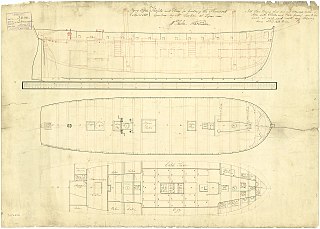
HMS Shamrock was a Bold-class gun-brig launched in 1812. In 1813-14 she played an important role in the captures of Cuxhaven and Glückstadt. After the war she became a survey vessel, and then a quarantine ship. She was delivered to the Coast Guard in 1833 as a watch vessel and was re-designated WV18 in 1863. She was sold in 1867.
















